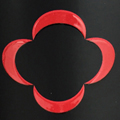W. & J. Graham’s
by
Terry Sullivan
 Summary: Graham’s was the first of six port lodges that we visited in Vila Nova de Gaia, across the Douro River from Porto. We did not know prior to our visit, Graham’s would become one of the notable wineries of our entire Portugal visit. Visitors to Graham’s Port Lodge can enjoy museum-like displays, a tour of the cellars, a tasting of ports, port cocktails and a restaurant.
Summary: Graham’s was the first of six port lodges that we visited in Vila Nova de Gaia, across the Douro River from Porto. We did not know prior to our visit, Graham’s would become one of the notable wineries of our entire Portugal visit. Visitors to Graham’s Port Lodge can enjoy museum-like displays, a tour of the cellars, a tasting of ports, port cocktails and a restaurant.
Our first tour of a port lodge was at W. & J. Graham’s. We were scheduled to have a multi-course lunch at the restaurant after our tour and tasting. The visit turned out to be quite memorable.
We started in the lobby of the visitor’s center and ambled past the many displays. Here we learned that W. & J. Graham’s was founded by Scottish brothers William and John Graham in 1820. The port wine company remained in the Graham family for 150 years. In 1970 the Symingtons acquired W. & J. Graham’s. The Symingtons are another port producing house of Scottish, English and Portuguese origin.
We were escorted to the theater by our guide, Mario. During the movie we saw vineyard workers arriving at the vineyards. There were scenes of workers on the terraced mountain slopes tending to the grapevines and harvesting grapes. Following the vineyard scenes there were views of a winery, where grapes were crushed in lagars. The movie concluded with the winemaker testing the wines before blending.
 Our tour then continued to a hallway on the lower level adjacent to the museum area which houses several artifacts, all involved in the process of crafting port. These include a carved stone sundial from one of the vineyards, a hand sculpture, a copper still, a wood planer, an oak barrel under construction and a model of a barco rabelo. The barco rabelo are the boats that transported port from the wineries in the Douro Valley to the port lodges in Vila Nova de Gaia. At the end of the hallway, a black and white photo documents a barco rabelo carrying barrels on the Douro River. On one side of this hallway, cement vats have plaques indicating their capacities. The other side of the hallway had large arched openings that lead to the cellars.
Our tour then continued to a hallway on the lower level adjacent to the museum area which houses several artifacts, all involved in the process of crafting port. These include a carved stone sundial from one of the vineyards, a hand sculpture, a copper still, a wood planer, an oak barrel under construction and a model of a barco rabelo. The barco rabelo are the boats that transported port from the wineries in the Douro Valley to the port lodges in Vila Nova de Gaia. At the end of the hallway, a black and white photo documents a barco rabelo carrying barrels on the Douro River. On one side of this hallway, cement vats have plaques indicating their capacities. The other side of the hallway had large arched openings that lead to the cellars.
 Our tour proceeded to the cellars where we saw a plethora of cigar-shaped wooden barrels and large wood vats. The granite walls are a half meter thick. This helps keep the cellars cool throughout the year. The larger vats have a capacity of 73,000 liters. The vats are filled to the 72,000 liter mark leaving 1,000 liters of space for oxygen. Ruby ports are placed in the large vats for a short period of time. Tawny ports start in the large vats and are then racked into the smaller cigar-shaped barrels.
Our tour proceeded to the cellars where we saw a plethora of cigar-shaped wooden barrels and large wood vats. The granite walls are a half meter thick. This helps keep the cellars cool throughout the year. The larger vats have a capacity of 73,000 liters. The vats are filled to the 72,000 liter mark leaving 1,000 liters of space for oxygen. Ruby ports are placed in the large vats for a short period of time. Tawny ports start in the large vats and are then racked into the smaller cigar-shaped barrels.
We also observed the library of bottles of port from years past. Some of the mold covered bottles dated back to the 1800s.
Tasting Room
The tasting room is a large room with rectangular tables and chairs (first photo below). Each table can accommodate six wine enthusiasts. Our tasting took place in the Vintage Room (second photo below) that could fit our over 30 group size. Our guide briefly mentioned the ports and then left our group. Tables were set up with the ports already poured. Each place setting had a white backlit lighted area to observe color. The Vintage Room had the feel of a private club with dark wood walls and bookcases.


The tasting consisted of a 20 Year Old Tawny, a 30 Year Old Tawny, a 40 Year Old Tawny and a 1972 Single Harvest Tawny. One of our group members asked if anything significant happened in 1972. I replied, that was the year that Kathy and I were married. This was the first port that we ever had that was a vintage port from the year we were married.
Ports
 The 20 Year Old Tawny Port had an orange color with brown hue. Dried fruits were noticed on the aroma. The soft and sweet taste included dried apricots, golden raisins, almonds and orange peel. The finish was fruity and long lasting. Pair this port with nuts, dried fruits, fruitcake and vanilla ice cream.
The 20 Year Old Tawny Port had an orange color with brown hue. Dried fruits were noticed on the aroma. The soft and sweet taste included dried apricots, golden raisins, almonds and orange peel. The finish was fruity and long lasting. Pair this port with nuts, dried fruits, fruitcake and vanilla ice cream.
The 30 Year Old Tawny Port had an amber color. Alcohol and dried fruits were on the aroma, while the taste included dried fruits and flowers. The port had a dried fruit aftertaste. Pair this port with chocolate.
The 40 Year Old Tawny Port had an amber color. Alcohol and dried fruits were on the aroma, while the sweet taste included dried fruits, nuts and flowers. The port had a dried fruit aftertaste. Pair this port with dark chocolate or a chair in front of a fire.
The 1972 Single Harvest Tawny Port had a brownish/orange color. The aroma had orange blossoms and dried fruit. The taste offered dried apricots, orange blossoms and honeysuckle. The finish included dried fruits and almonds. The port had an extremely long aftertaste with dried fruits yielding to almonds. We were not rushed during the tasting. It was enjoyable to taste the ports and talk with the people at our table.
 Lunch
Lunch
Our group proceeded to the Vinum Restaurant. We were greeted by restaurant staff as soon as we entered. We were asked to proceed to the bar area for a cocktail. The White Port and Tonic was the first port cocktail that we had. It was delicious. The cocktail was made of equal parts of white port and tonic water over ice. It was garnished with lemon rind and mint leaves.
As with the tasting, lunch was not rushed and lasted a couple of hours. Our dessert was paired with the 10 Year Old Tawny. This wine was a translucent ruby color with a sienna hue. Dried red fruits were on the aroma while dried cherries and dried red plums were on the velvety taste. The finish was fruity.
If you are visiting Porto, take the time to cross the Douro River and visit W. & J. Graham’s Port Lodge. Take the tour and spend some time rather than rushing your tasting. Reservations are required for tours and tastings.
W. & J. Graham’s Port Lodge
Rua do Agro 141, 4400-281
Vila Nova de Gaia, Portugal
Article written April 2018.
Please support the following.
 |
||||
|
Portugal |
Spain and Portugal |
SmoothRed London, England, United Kingdom |

